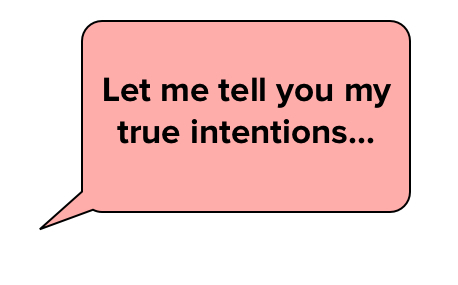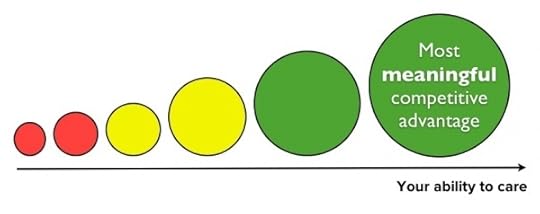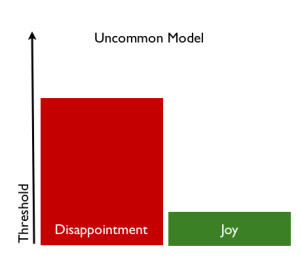Rajesh Setty's Blog, page 4
August 25, 2013
7 Insights in 7 Minutes by Dave Logan
 I have been friends with Dave Logan for years and he is one of the most insightful thought leaders when it comes to building a high-performing company culture. His books are a treat to anyone. In this Gloopt series, Dave talks about a number of topics. I have picked seven to share.
I have been friends with Dave Logan for years and he is one of the most insightful thought leaders when it comes to building a high-performing company culture. His books are a treat to anyone. In this Gloopt series, Dave talks about a number of topics. I have picked seven to share.
Dave has written several books and my favorites are:
1. Three Laws of Performance and
Dave and his team at CultureSync also consult with some of the leading organizations on the very important topic of organizational culture.
1. How to improve your company performance?
Dave talks about the four vital areas to fix in a company to increase its performance
2. How to capitalize on the three laws of performance?
Three Laws of Performance is one of my favorite books and here Dave expands on the most important law – the first law about default future.
3. How do I get started with leadership?
Listen to these four simple and insightful questions that Dave shares to help you get started on your leadership journey
4. How can I be a leader like Phil Jackson?
Legendary Phil Jackson is also a fan of Dave’s book “Tribal Leadership.” Here Dave shares how to lead like Phil.
5. How to fix a dysfunctional team?
Here Dave shares the secret of fixing a dysfunctional team
6. What is the biggest problem in an organization?
Dave talks about the need for something that trumps individual ego
7. What should we do after we identify our values?
Dave shares a 3-step process to make the most out of values that you have identified
Have a great week ahead!







The fastest way to reveal your true intentions
Trust speeds everything.
Not being able to read your true intentions slows down the prices of building trust
If so, what is the fastest way to reveal your true intentions?
What can you say that will make it clear to the other person that you have their best interest in your heart. Since they can’t read your mind, you might want to explicitly state your true intentions?
If you are struggling to come up with a script, put yourself on the other side. Think about your own experience. What did the other person say that immediately gave you a sense of trust? Do you see a pattern and can you generalize the script?
Honestly, I wish there was a string of words that you could stitch together that will instantly reveal your true intentions. There are none because if there were, how would one know that truth is being spoken?
It looks like you are stuck.
Thankfully, there is an answer and it has nothing to do with the right choice of words. It is via the right actions. Your actions of caring will trump any combination of words that you can intelligently string together to express your true intentions.
The lesson: Stop talking and start taking the right actions.







August 20, 2013
Making it Real: Water Walk Experience at Inbound13
I have participated in several charity:water fundraising drives in the past few years. Today at Inbound conference, the “Water Walk” experience made me want to do a lot more for this organization in the future.
Reading is not (always) believing.
Right on their mission page, Charity:Water invites everyone to experience the problem:
We invite you to put yourself in their shoes. Follow them on their daily journey. Carry 80 pounds of water in yellow fuel cans. Dig with their children in sand for water. Line up at a well and wait eight hours for a turn.
You read about it and it touches your heart but I don’t think it’s enough
Experience makes it real
HubSpot partnered with Charity:Water and setup an aisle where everyone could experience (partially) what it takes to carry 40 pounds of water in yellow cans.
I walked back and forth the aisle with 20 pounds in each hand. It was NOT easy. I can only imagine what it must feel like for all those who have to walk a few miles everyday to get water for their homes. The experience made it real. The entire “Water Walk” was a fundraiser with HubSpot donating $45 for every person who participated in the “Water Walk.”
You can help too (even with just a tweet)
Yes, you can donate to charity:water to help someone in a third world country get clean water. You can also take one simple step in the next two days to tweet the message below and HubSpot will donate $2 per tweet to charity:water
#INBOUND13 and #September – $2 for @charitywater from @HubSpot for every tweet. Please retweet | Tweet This
Every tweet counts (in this case $2)!!!







August 11, 2013
Mini Saga #130 – Fundamentals
Mini Saga #130 – Fundamentals
Jerry figured out the possible cause for dip in sales. Samples. Mark was giving away samples. “Mark, stop giving away samples,” he said. When Mark looked puzzled, he continued, “We’re not the best in town. Samples may scare people away.” Mark smiled, “Giving away samples is a minor problem then.”
In the long run, fundamentals like quality trump any kind of marketing gimmick.
Note:
1. A mini saga is a story told in exactly 50 words. Not 49 or 51 but exactly 50.
2. You can download a photographic manifesto of Mini Sagas at ChangeThis. Here is the link – Mini Sagas: Bite-sized Wisdom for Life and Business (PDF, 2.9MB).
3. For a complete list of Mini Sagas, please see the entire list here or at Squidoo







August 4, 2013
The most MEANINGFUL competitive advantage
The most meaningful competitive advantage is
To scale your ability to care
Caring at scale is a clear competitive advantage because so many people out there pretend to care.
It probably would be easy to scale caring if you have a LOT of money. It would be easy, yes, but one should still decide to do it. When you have a LOT of money, it is also easy to not care about anything. Thankfully, there are a number of amazing people (e.g.: Bill Gates, Warren Buffet etc.) who are wealthy and also have a big heart to scale caring.
We both agree that LOT of money makes scaling a moot point.
What can you do when you don’t have that kind of money but you choose to scale caring?
If the above question interests you, then you might find the rest of the article relevant.
Let’s get started:
1. It all starts with the right intentions:
This may sound like some woo-woo stuff but it’s not. It is at the core of scaling – the intentions or the why of caring. If you are thinking of using caring as some shortcut to gain something, you have lost the plot. It rarely works that way and not just that, it would also be a painful journey where you will constantly feel like you are sacrificing something for a future benefit.
On the other hand, if your joy is in bringing joy to others genuinely, what you do stops feeling like “work” and it is also where the magic begins.
Just to be clear, I am not suggesting that your intentions “to care for others” should come at the expense of “caring for you and your family.” There is no need for self-sacrifice or martyrdom. If you are not standing on a steady ground AND if you are not growing, sooner than later you won’t have the capacity to care for others even if you have the purest intentions.
2. The one thing to remember
Next, you and I have limited memory (that we use) and while you can remember a LOT of things about LOT of people, the one thing that matters most is what matters most to them – what they deeply care about.
Do a quick self-audit about 25 people that you feel deeply connected to. Do you REALLY know that they care about most? Do you know what their hopes, aspirations, dreams and fears?
Or, are you happy to know their birthdays and anniversaries?
Actually scratch that – you don’t have to remember that anymore as Facebook will alert you on these “important” events and you can quickly post something on their timeline and move on with your life.
Jokes apart, if you don’t know what someone deeply cares about, how can you care about them? It’s going to be a non-starter and setup for failure.
Now, what is the meaning of remembering? You should not treat this as a safekeeping mechanism to be reviewed somewhere in the future but to actually keep this in your foreground thinking every time you encounter something or someone that can positively impact what matters most to them.
How to extend this even further?
Sooner than later, you will find a group of people who will share some characteristics (e.g.: entrepreneurs or knowledge workers or dentists). Pick one or more groups where you can make the biggest impact. Now extend by thinking through what that group as a whole will care about. What are top three things that will keep them awake?
3. Master leverage like it’s your birthright
It would take a lot more than a blog post to cover leverage but it starts with a mindset of design to get multiple positive outcomes for multiple people with a choreographed sequence of actions.
You’re trained to think about focus and going after one result. It is good but with a slight twist, you could design for results + positive side benefits.
A quick example:
You could design a blog post that will later become a part of the book. The content from the blog post can be part of a video. Extract the audio and it could be a podcast. Put a few slides and it could become a short presentation that you can share. I can go on and if you are too busy for a small fee a virtual assistant based elsewhere can do the repurposing part for you.
[ Note: Check out my course on this topic called "The Art of Leverage" ]
4. Design for partial autonomy
The most valuable asset you have is next available autonomous block of time.
We both know that we get reasonable autonomy with wealth. What can you do until then to be reasonably autonomous?
Answer: You start designing for it right from where you are.
It starts when people around you really NEED (not want) what you have to offer to the world AND they don’t care how you deliver it to them. They trust you that if you are handling it, it will get DONE in a reasonable timeframe with a better-than-average quality. If you can start there, you are on your way to building autonomy.
What will you do when you have that autonomous time on your hand?
To start with, it falls under two broad buckets:
1. Activities that will enhance the capacity of others to produce and care more
2. An investment in your own capacity to produce and care more in the future.
Being autonomous is not a destination point or an award that you are bestowed with. It is an ongoing journey where you re-calibrate to be relevant and valuable in changing times.
5. Design built-in amplifiers
You and I will leave our footprints in this world every single day just by the way we live. They are not outcomes that happen after a five-year project. It could be a simple blog post, a seminar that you delivered, a 1-1 meeting with a young student, an interview where you were quizzed about your values and beliefs and so on.
If you have packed enough value in any of the above, people who have been touched by them will benefit from it right away. But you could go one step further. You could take a few more minutes of your time to see how you could design what you deliver that includes built-in amplifiers.
I don’t have the time to cover the entire details here but you could start by understanding 9 ways people respond to content online.
6. Use the right tools
You and I both are benefiting from the evolution of available tools all the time. In fact, if a tool like WordPress was not available, publishing the article that you are reading would have been a nightmare. It would have taken more time, more money, more energy, more convincing to get it out of my head and into your hands. It seems simple now, but I had to take the plunge and embrace this new tool in 2005. if I had not, I would have not only missed the opportunity to share my thinking easily but also all the relationships that I have formed because of my blogging.
Earlier this year, I embraced using our own product from our new startup WittyParrot. It used to take me a lot of times to respond to my emails before I started using WittyParrot but now it takes me 1/10th of the time. Why? Because all the reusable content blocks (a piece of text, ebooks, blog article snippets, audio, video etc.) that we call wits are stored and available to me via the WittyParrot content delivery platform. Because the 80-20 rule applies here, 80% of the time I am reusing content items in one way or the other. Now, instead of trying to search, find, copy and paste, I assemble my email responses by dragging and dropping wits from the WittyParrot side bar. The direct result is that I am able to care and help more people than what I used to before I started using WittyParrot. Watch the launch video and if you are interested to learn more, tell me a little bit more about yourself in an email to me.
Our new book (written along with my close friend Bill Sherman) is all about one such habit – The Impact Habit that will significantly increase the impact you are making in this world.
I can go on but in summary all I can say is that tools have played a major role in everything I do. When I meet really bright people who have not embraced the latest tools that are available, I feel sorry twice – first for them because they are not capitalizing on what’s available and second, for the world – this knowledge could have helped make this a better place by a tiny bit. Now add this up for every one of the experts that are out there in the world and you can see the collective loss for the world – all just because they chose not to embrace the new tools that are made available.
Now, my request to you is that you should always be open to trying any and every tool that will provide leverage without increasing your cost (significantly) to get that leverage. If after trying the tool for a while you feel that you are not comfortable, you can abandon using it but not trying it is to shy away from the responsibility.
7. Ecosystems and Choreography
I saved this for the last because the combination is ultra-powerful. The ecosystem I am referring to is a set of people that you have built a close enough relationship that they are almost part of your family. You and I know that we cannot “order” such an ecosystem into existence. You get such a thing when you have partially mastered scaling of “caring.”
You can light a thousand candles in the same time that someone will struggle to light half a dozen. If you can do that, you start a virtuous cycle of building good obligations and slowly and steadily you cultivate an ecosystem that is like a fortress.
Now, building an ecosystem is only part 1 of the story. Part 2 is to be able to choreograph a compelling act that will bring the right players in the ecosystem to create more meaning to the world WHILE creating more meaning to the lives of the players who are participating in that act.
For your choreography to be successful, both have to happen – more meaning in the world AND more meaning in the lives of participants from the ecosystem.
If you can get there, you have the most meaningful competitive advantage!







July 30, 2013
7 Insights In 7 Minutes By Kare Anderson
 Kare Anderson and I have been friends for a while. Every meeting and conversation with Kare is an absolute delight because she is simply a powerhouse of ideas, enthusiasm, energy and a bundle of possibilities.
Kare Anderson and I have been friends for a while. Every meeting and conversation with Kare is an absolute delight because she is simply a powerhouse of ideas, enthusiasm, energy and a bundle of possibilities.
I was not there when these videos were recorded by Japjot mentioned to me that the experience was very similar to that of what we had when we recorded Guy Kawasaki videos – almost no retakes, insights with clarity and compassion.
More than 25 videos were recorded in one session so a lot more coming your way in the next few weeks.
For now, here are 7 insights in one-minute each from Kare Anderson
1. Offer Actionable Ideas
2. Inject Interestingness Into Your Message
3. Smart Partnerships Grow Your Business Faster
4. Make Your Body A Billboard For Your Messages
5. Make Sticky Messages
6. Smart Partnerships Boost Seamless Service
7. Get Specific Sooner
Disclaimer and a Question for You
First, the disclaimer. I am an advisor to Gloopt and the founder Japjot is a close friend.
Second, a question for you. Do you have ideas to share on Gloopt via one-minute videos and do you have the accomplishments to back those ideas up? If yes, please contact me with a short note about your ideas and if Japjot and I like them, we will reach out to you with more details.







July 27, 2013
Mini Saga #129 – Calmness
Mini Saga #129 – Calmness
They escaped a nasty accident as the drunk driver cut them off rudely. After shaking his head for a couple of seconds, Jack focused back on his driving. Susan asked, “How can you be so calm?” Jack smiled, “Golden rule – I stopped paying a price for the faults of strangers.”
When you start paying a price for the faults of strangers, you will have to say goodbye to calmenss.
Note:
1. A mini saga is a story told in exactly 50 words. Not 49 or 51 but exactly 50.
2. You can download a photographic manifesto of Mini Sagas at ChangeThis. Here is the link – Mini Sagas: Bite-sized Wisdom for Life and Business (PDF, 2.9MB).
3. For a complete list of Mini Sagas, please see the entire list here or at Squidoo
4. Photo Courtesy: Tanmay Vora on Flickr







July 24, 2013
The Opposite of Boredom is…
If you guess, it is entertained, you are wrong.
The opposite of boredom is growth | Tweet this
If you are a Manager and your employees seem to be bored, don’t buy an entertainment system or a pinball machine. This will help only in the short-term. Create an environment where people grow every single day
If you are an employee, don’t wait for your Manager to create an environment for growth. YOU are responsible for your growth more than anybody else. You have to take responsibility and you have to be accountable for where you go. You may not have control on what work is handed to you, but you definitely have control on WHAT ELSE you can do beyond what is handed to you.
And, lastly, if youa re an entrepreneur and are bored, may God save you!







9 Steps to Joyful Living
Disclaimer: I am no expert on happiness or joyfulness. While I have read numerous books on this topic, I have not done a research project of my own to reach the conclusions presented here.
Let’s start right away. While I have not done academic research on this topic, I have been a student of linguistic and stoic philosophies for the last several years and the combined knowledge of these two philosophies have shaped my own living. Those who know me will probably attest that I do lead a joyful life (some social proof there just in case)
Step Zero: Being Open
OK, you have chosen to continue reading even after reading the disclaimer. That shows that you are open without a lot of reservations. Without that, most of the other points in this article will make no sense. If you are not open, it is clear that you are regurgitating old ideas and recycling them like crazy. Being open to new ideas will expand your horizons.
Honestly, if you are not joyful with what you know AND are not open to new ideas, we have a starting trouble, right?
The rest of the steps are broken down into two main buckets:
A. Your actions | Things where you must choose your actions
B. Your reactions | Things where you must choose your reactions
A. Choosing Your Actions:
1. Reset the thresholds
If you forget everything in this article, just remember to reset the thresholds to the right levels. In general, people have low thresholds for pain and disappointment for any kind and high thresholds for joy.
Today, it might look like this:
When you reset the thresholds, you simply switch the two – meaning have a super low threshold for experiencing joy and a reasonably high threshold for pain or disappointment.
Remember that thresholds are not automatically programmed into your brain when you were born. You could easily reset them at will – like right now!!
Related Reading: The bar to be joyful
2. Extraordinary Effort without Extraordinary Attachment to Results
The general way people think is that if they are “lucky” they will have to put in “ordinary effort” that will result in “extraordinary results.” You see you might have someone in your network for whom it appears like that’s the way it turned out – ordinary effort leading to extraordinary results.
Well, that can happen in movies and soap operas.
A better model is to go with “extraordinary effort” without extraordinary attachment to results. Keep this attitude for long enough and sooner than later as you start accumulating valuable accomplishments, you will reach a stage where you will automatically see ordinary effort leading to extraordinary results.
Until then, you don’t need to postpone being joyful – journey is where all the magic is.
3. Discover joy in everyday things
The problem stems from the media. When a nicely crafted advertisement tells a great story in 30 seconds to show you that you will be joyful when you buy “that” thing, sooner than later you will start believing that you need “that” thing to be happy. A void is created without “that” thing in your life.
Remember that you have a choice.
You CAN enjoy the advertisement but choose not to fall trap for it. In fact, you can go one step further – you can choose to DISCOVER joy in everyday things that you so totally take for granted. It will change the way you look at life.
4. Spread Joy to Everyone You Meet
A genuine smile when you meet someone will most likely lift the spirits of the other person. Don’t fake it unless you are meeting an idiot who can’t see through it. If not anything, start smiling because they say it’s good for your health anyway.
Spread joy everywhere all the time and by sheer statistical logic, some of it is bound to come back and find you 
B. Choosing Your Reactions:
1. Shorten the Rebound Time
If you are moving, sooner than later you will fall down – not once but many times during the rest of your life. The real question is – “How fast can you rebound?”
Being in the “funk” mode will result in one thing – giving you license for inaction. Nobody can make progress without action and without reasonable progress, joy may be in short supply.
2. Stop self-torture
When someone pokes at you, it might hurt you.
How about you doing a replay when you are alone – poking yourself so that you can relive how you felt when you were poked a while ago?
How about you keep reliving the first poking experience when you are alone (sometimes even after years) long after the person who poked you has forgotten about it and moved on?
It’s insane, isn’t it?
Not when you are engaged in it.
Again, it’s a choice – you can continue to torture yourself or say goodbye to that habit once and for all.
3. Forgive AND Forget quickly
Forgiving is a gift first to yourself (so that you don’t keep poking yourself) and then to the person who you are forgiving.
You have to go one step further AND forget the incident that led you to this situation in the first place. Forgiving will remove the bitterness and forgetting will clear the mind space to make way for better things in life.
4. Celebrate victories of others
If you don’t get into the habit of genuinely celebrating victories of others, you might be tempted to start comparing their “good situations” to “your bad situations”
It is not a big ask. You expect others to celebrate your victories and all you need to do is to reciprocate that feeling.
Think about it. If you are joyful only when you experience victories, those times are far fewer than victories for people all around you.
Why rob yourself of all those free additional opportunities to be joyful?
In summary:
Steps for joyful living involve being open and choosing your actions and reactions with care | Tweet This.







July 22, 2013
7 Insights in 7 Minutes by Guy Kawasaki
 My friend Japjot Sethi (founder and CEO of Gloopt) and I had an opportunity to record these 7 insights at Guy Kawasaki‘s residence a few months ago. What was fascinating to me was that there were no retakes for any of the recordings. It simply shows the internal clarity, depth and control on how to package an insight in a super short span (in this case one minute each) of time.
My friend Japjot Sethi (founder and CEO of Gloopt) and I had an opportunity to record these 7 insights at Guy Kawasaki‘s residence a few months ago. What was fascinating to me was that there were no retakes for any of the recordings. It simply shows the internal clarity, depth and control on how to package an insight in a super short span (in this case one minute each) of time.
Guy has been an inspiration for me over the years but to watch him in action from close quarters was a treat by itself.
It is one of those experiences where at the end of it, you just yearn to up your own game because it is clear that there is so much more to learn.
1. How to Enchant Your Boss
Guy explains how to enchant your boss
2. How to Enchant Your Employees
Now, turns the focus on employees
3. Essential Hints to Creating a Powerpoint Presentation
We all know that Guy is an awesome speaker and his slides are stunning. Here he shares some tips on how to create great presentations.
4. The Key Components of Creating a Likeable Social Media Profile
Guy turns his attention to social media
5. The Most Effective Method to Gain Social Media Followers
Guy answers the question in the mind of everyone dabbling with social media
6. Three Stages of Publishing a Book
Guy focuses on authors trying to get their ideas spread via publishing a book
7. Three Pillars to Follow for Achieving Success
Guy shares his advice on what it takes to be successful.
Have a great week ahead!
Disclaimer and a Question for You
First, the disclaimer. I am an advisor to Gloopt and the founder Japjot is a close friend.
Second, a question for you. Do you have ideas to share on Gloopt via one-minute videos and do you have the accomplishments to back those ideas up? If yes, plesae contact me with a short note about your ideas and if Japjot and I like them, we will reach out to you with more details.







Rajesh Setty's Blog
- Rajesh Setty's profile
- 6 followers











